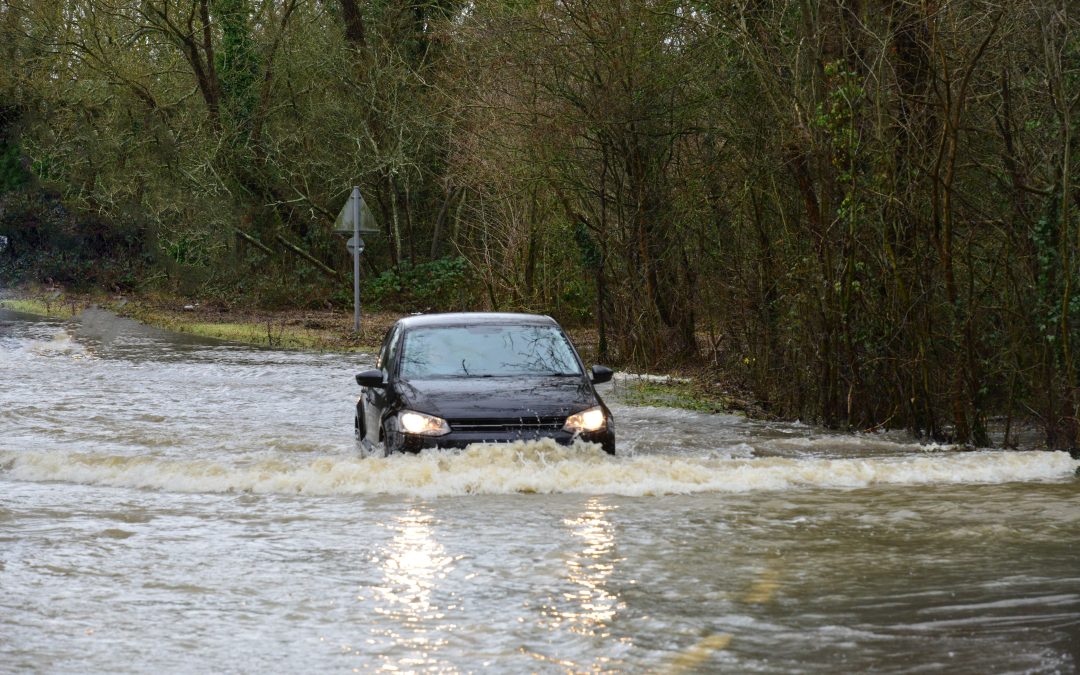Your Comprehensive Guide to Navigating Adverse Weather Conditions
Driving through floodwater and heavy rain can be a daunting experience for even the most seasoned drivers, and it often catches newer drivers off guard. In these adverse conditions, it’s essential to know how to navigate safely. With our quick and easy guide, you’ll feel better equipped to handle these challenging driving situations.
Driving in Heavy Rain: Tips to Keep You Safe
When heavy rain turns the roads into a watery maze, these tips will help you stay safe:
- Turn Your Headlights On: According to the Highway Code, you must use your headlights when visibility drops below 100 metres. This helps others see you, and you see the road better.
- Use Fog Lights Sparingly: If you have fog lights, use them, but remember to switch them off when visibility improves.
- Increase Following Distance: Leave at least twice as much space between your vehicle and the one in front. It takes longer to stop in wet conditions.
- Avoid Aquaplaning: If your steering feels light due to aquaplaning (losing tire contact with the road), ease off the accelerator and slow down gradually.
- Keep Your Bonnet Closed: If your car breaks down, avoid propping the bonnet open in heavy rain, as rain-soaked electrics can make it harder to restart the engine.
Driving in Floods and Standing Water: Staying Afloat
Navigating through floods and standing water requires caution and preparedness. Here’s what you need to know:
- Move to Higher Ground: If you anticipate flooding, try to park your car on higher ground to prevent water damage to the vehicle’s electrical systems.
- Avoid Moving Water: Don’t drive into flood water that’s moving or deeper than 10cm (4 inches). Let approaching vehicles pass first.
- Drive Slowly and Steadily: Move through standing water slowly to avoid creating a bow wave, and test your brakes as soon as you can afterward.
- Beware of Fast-Moving Water: Fast-moving water can be incredibly powerful and may sweep your car away. Be extremely cautious.
- Stay in the Vehicle: If you get stuck in floodwater, it’s usually safer to stay inside your car and call for help rather than attempting to get out.
Why Slow Down in Flood Conditions?
Driving fast through water is not only dangerous but can also be costly for various reasons:
- Aquaplaning can cause loss of control.
- Splashing pedestrians or cyclists may result in fines and points on your licence.
- Even a small amount of water in your engine can cause significant damage.
Types of Floodwaters and Their Effects
Different types of floodwaters can carry various risks:
- Urban Floodwater: May contain dangerous bacteria from drains and sewers, which could cause diseases.
- Rural Floodwater: More likely to be contaminated by agricultural chemicals and animal waste.
Fords: Not Always Safe to Cross
Just because a road goes into a river and comes out the other side doesn’t mean a ford is safe to cross. The depth and speed of the water can change with the weather, making fords potentially treacherous.
Floodwater Facts: The Dangers Revealed
Understanding the dangers of floodwater is essential for staying safe:
- Most drowning deaths happen within just 3 metres of safety.
- Two-thirds of flood-related fatalities involve strong swimmers.
- A third of flood-related deaths occur in vehicles.
- Cold water reduces muscle strength and can impair your ability to stay afloat.
- Even a mere 15cm of fast-flowing water can knock you off your feet.
- Floodwater speed affects its force exponentially – double the speed quadruples the force.
- A depth of 60cm will float your car, while 30cm can move it.
What Could Happen if You Drive into Floodwaters?
Driving into flood waters can have severe consequences, including:
- Damage to your car’s electrical systems.
- Reduced or no braking ability.
- Aquaplaning and loss of vehicle control.
- Collisions with hidden objects under the water.
- Splashing pedestrians, potentially leading to fines.
Detecting Water in Your Engine
If you suspect water has entered your engine, watch out for these symptoms:
- Unusual sounds when starting the engine.
- A strong smell of petrol near the exhaust pipe.
- Difficulty starting the engine or brief starts followed by shutdowns.
Checklist for Driving in Heavy Rain & Adverse Conditions
If you must drive in heavy rain or adverse weather conditions, follow these steps:
- Ensure your car’s equipment (e.g., wipers, lights) is in working order.
- Check your tire tread for adequate grip.
- Keep your windows clear for optimal visibility.
- Test your brakes before entering busy roads.
- Drive slowly to account for increased stopping distance.
FAQs: Answers to Your Most Pressing Questions
- How should you drive through floodwater? Drive slowly in first gear, around 3-4 mph, with higher revs. Keep the car moving and avoid stalling.
- What depth of water can a car drive through? It’s generally not advised to drive through water deeper than 10cm unless you have a higher-set 4×4.
- What should you do after driving through a flood? Check your brakes and inspect your car for damage, especially lights and interiors. Ensure your car’s fluids haven’t been contaminated.
Remember, while most cars can handle regular rain, heavy rain and floods pose significant risks to both your vehicle and your safety. Whenever possible, avoid driving in such conditions and stay safe on the road.
